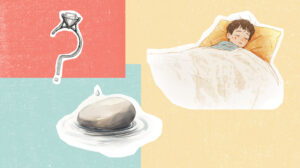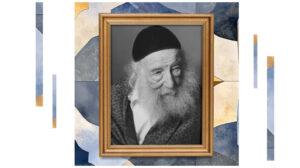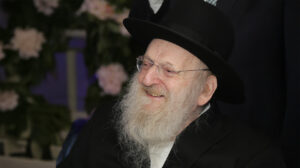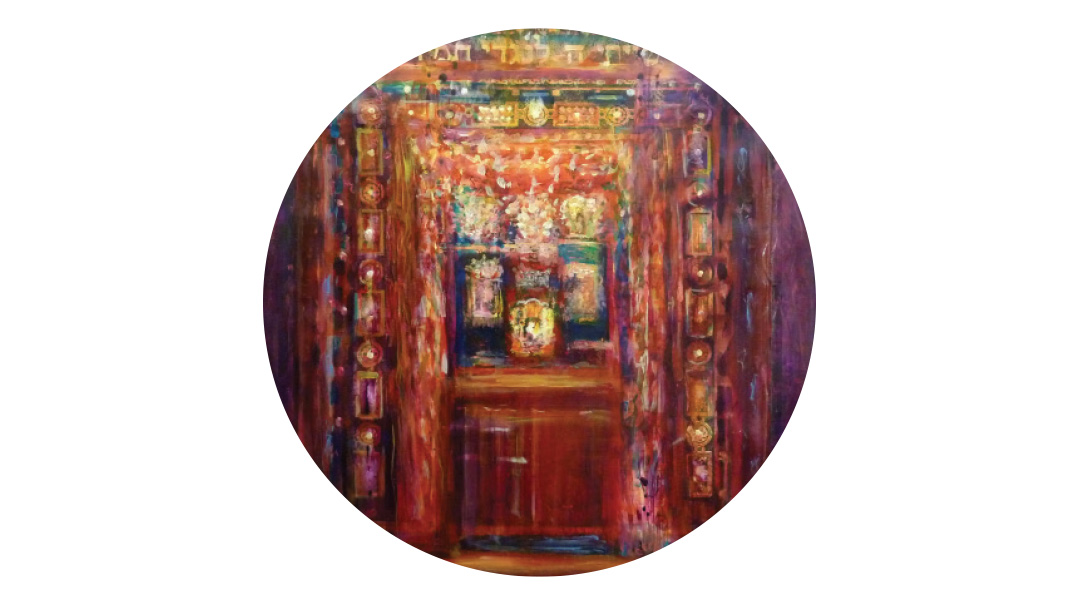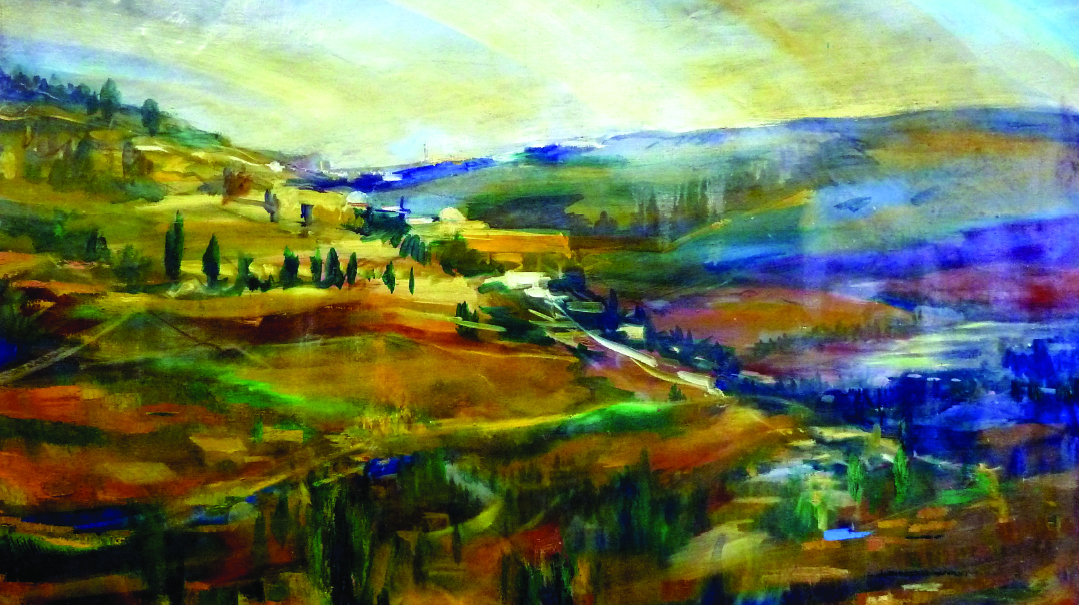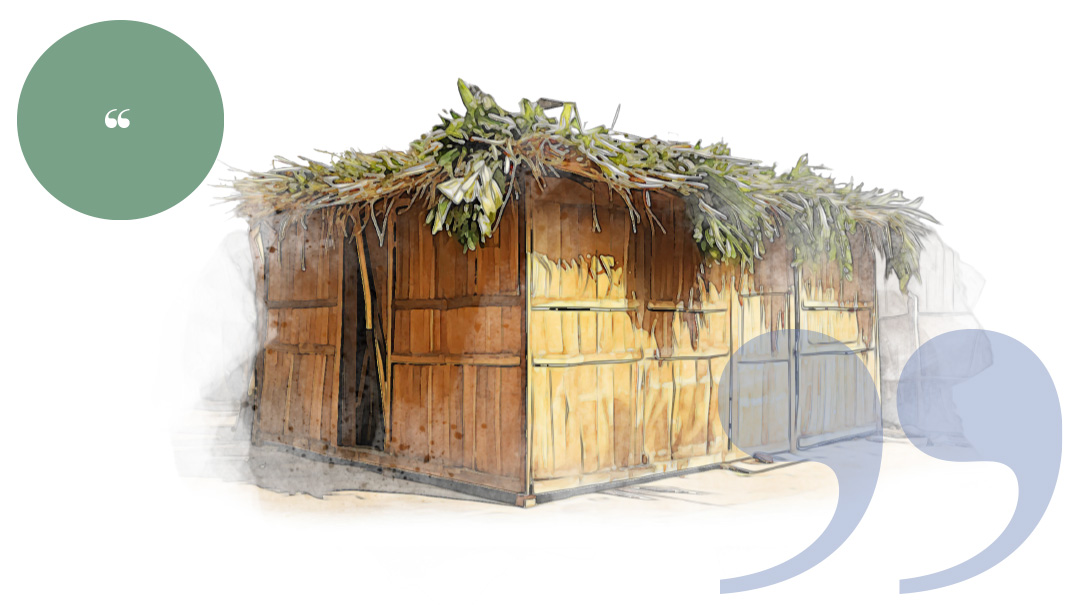A Tale of Two Voices

On Pesach, Hashem took us out of Mitzrayim. During Sefiras Ha’omer, we take Mitzrayim out of us
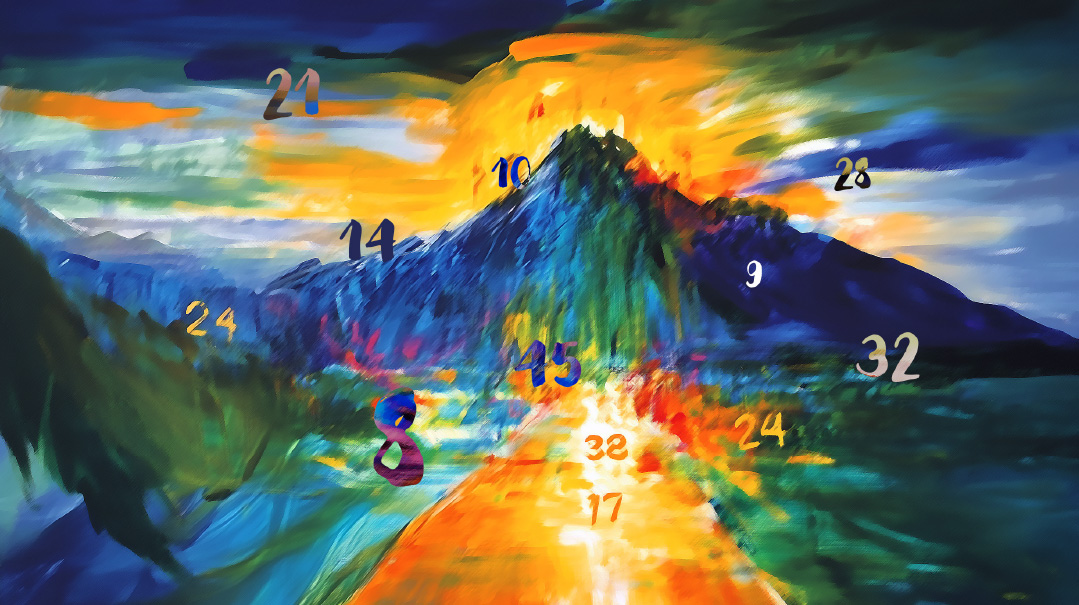
"D
on’t just sit there! Do something!”
We love action, we love doing, we love feeling we’re capable and in control and if we just try a little harder, work a little smarter, we can change any situation. If we hear about a problem, we love the idea of swooping down in our cape and making everything better again — without having to stick around to see how things work out.
But not all problems can be solved by action. Just as jumping up and down and yelling doesn’t make a seed grow faster — there may be instant soup, but there’s no such thing as instant tree — so too, our growth as human beings is a slow, gradual progress.
Yetzias Mitzrayim involved action — it was dramatic, sensational, and obvious. In front of our eyes the world transformed: The dependable, placid Nile turned to blood and was overrun by frogs. Devastation fell from the sky, animals and people died unexpectedly, and the huge noise as a major empire was smashed into oblivion still echoes through the ages.
This redemption that we remember in exquisite detail each year can be termed a “male redemption.” It landed on us from above as we stood below, open-mouthed, stunned, grateful — and acted-upon — observers. It involved resolute, daring, decisive action.
But the male, active aspect is always followed by the female process. We could be taken out of Mitzrayim by Hashem Above, without much effort on our part, but only we could do the next part of the redemption: taking Mitzrayim out of us.
While Hashem may manipulate nature and intervene to change the course of events, our hearts are only our own to change. A feminine redemption doesn’t act upon. It acts with. A feminine redemption meets the person where they really are — and opens up a space for growth and change.
We were a slave nation, pounded into passivity for hundreds of years — we’d lost our ability to take action, had no sense of mission or courage. We were sinking slowly but surely into the quicksand of the Egyptian culture, light years away from the “kingdom of priests and holy nation” that was the purpose of this whole endeavor.
A male redemption that airlifted us out of Egypt could only redeem us from external dangers.
A Feminine Redemption
Once we were out of Egypt, we still needed a new heart and a new identity — and hearts and identities cannot be commandeered. Like plants and babies, hearts and identities grow and develop slowly — by facing difficulties, by grappling with challenges, by dealing with hardships.
As parents we all know this. External actions are important and sometimes even life-changing. Sometimes we need to switch a child’s school, or speak to the teacher about having his seat changed. Perhaps we buy him a new school bag or a new bike to raise his social image. But these external actions are the easy part. Dramatic and decisive as they might be, they won’t take away the need for spending quality time with our child, learning what makes him tick, encouraging him through his challenges. There are no shortcuts to real, organic growth.
How much easier it would be if we could just open up a USB port into our children’s skull and pour all our values and ideals straight into their souls. But facilitating real growth often involves barely perceptible, not-particularly-gratifying actions — moving back a bit so your toddler takes another step, asking your teenager if he wants you to wake him up after his three alarm clocks go off and he’s is still deep in la-la land — and accepting his “no” as an answer. Recognizing that even though you’re smarter, older, wiser, more experienced, you actually have no control over what time he gets out of bed. And that just reminding him — when you see how down he is about his failures — what a hero he is for not giving up on his challenges may not seem like “doing something,” but at the end of the day may actually be what gives him the strength to continue trying, not only with this challenge, but with others that lie far in the future.
A feminine redemption doesn’t act upon the other, doesn’t do, accomplish, and perform. A feminine redemption acts with. It’s responsive, permeable, and open, attendant to each sign of life, reveling in and nurturing every tiny, little green shoot.
This can help us understand why, after all these stupendous miracles, Hashem didn’t just plunk us down right in Eretz Yisrael, and instead of schlepped us, thirsty, hungry, tired, and fearful through the desert. Because taking Egypt out of us was a process that couldn’t be imposed from the outside. The only one who could transform our hearts from weak and cowardly to strong and courageous was ourselves. And we could do that only by living through the deprivations and the challenges of the midbar.
The Feminine Art of Connection
Unlike the drama of the male kind of redemption, which involves clear, delineated action with concrete achievable goals, feminine redemption can feel hopeless. Growth is so inestimably slow. Maybe it’s all a mirage and nothing is changing at all?
Many years later, Moshe Rabbeinu expressed his frustration to Hashem (Bamidbar 11:11-12): “Why have You done evil to Your servant… that You have placed the burden of this entire people upon me? Did I conceive this entire people or give birth to it that You say to me, ‘Carry them in your bosom as a nurse carries a suckling?’ ”
Rashi wonders how Moshe can say that G-d told him to “to carry them in your bosom as a nurse carries a suckling,” when we have no record of that conversation. Where did Hashem say that? Rashi’s answer reveals a mind-blowing insight. Apparently, this was when Hashem tells Moshe (Shemos 32:34), “Go and lead the people.” As it turns out, leading the people, means exactly that — carrying them and caring for them as you would a child. It means acting with them, not acting upon them — nurturing, guiding, discussing, negotiating. It means being their mother as well as their father.
Moshe’s anguish was so great that a few verses down, Rashi tells us that Moshe became “toshash kocho k’nekeiva — weak as a female.”
The female persona is indeed weak from the perspective of the male language of power. If strength is measured by the ability to impose one’s will upon others — “to act upon” — generations of women have discovered that that rarely works in the long run. Even with a storehouse of “male-type” resources — you may indeed be bigger, stronger, and smarter than this cute little two-year-old, or this annoying teenager, but when he insists he has to put on his shoes himself or refuses to go to bed at a reasonable hour, you quickly discover that your edge is not what’s going to help. The feminine persona has long ago learned that when you want to mold someone, to change them, to make your mission their mission, it’s not power and strength that you need. You need the feminine art of connection. You can’t hit the rock. You have to speak to it.
Two Types of Power
If Moshe Rabbeinu represented the male type of redemption, Miriam Haneviah represented the feminine type. Miriam didn’t have a divine staff with which to perform miracles, she wasn’t charged with a mission at the burning bush. She couldn’t rain down plagues on Egypt or split the sea. She wasn’t the posek hador, like her father Amram. She — like most women throughout history — was essentially “powerless” (in the conventional sense of the word).
Yet, where would we be today if Miriam hadn’t convinced her parents to remarry; if, as a midwife, she hadn’t bravely defied Pharaoh’s command and saved the babies; if she hadn’t stood on the banks of the river and offered her mother’s services as a nursemaid to the Egyptian princess?
“Vateisatzav achoso meirachok l’dei’ah mah yaaseh lo — his sister stood from afar to know what would happen to him.” Feminine “acting with” often involves observing and being present. “Acting with” isn’t about passivity. It’s about being present, attentive, attuned to the other — and the Other. It’s about knowing that even though we love the rush of adrenaline that makes us feel like we’re running the world — we aren’t. He is. The feminine force is misatzev — open, watching, ready to further His agenda.
The commentaries discuss the unusual verb form of the word tisatzav — and speculate whether it also refers to the Shechinah Who is with us in our pain or to the Hashgachah pratis that put Miriam in the perfect place at the perfect time. Yet all of these options speak of the feminine type of redemption: Don’t just do something! Sit there! Be open and receptive. Have faith in and nurture the good.
Interestingly, many years later, when the Jewish people stood frozen with fear on the banks of the sea, with the thundering horses behind them and the huge, vast sea spreading out before them, Moshe Rabbeinu invites them into that same feminine space of “not doing.” “Hisyatzvu u’re’u es yeshuas Hashem — stand firm and observe Hashem’s salvation.” Don’t do. Stand there and make room for Hashem in this story.
From Pesach to Sefiras Ha’omer
Pesach isn’t a passive holiday. Not only are we celebrating an action-oriented, miraculous, male type of redemption, but as our ragged fingernails, bleach-spotted clothes, and aching backs can testify, Pesach requires extensive action on our part in order to make it happen.
Pesach is a public holiday where we’re constantly held up against an external standard — do we eat gebrochts like that friend? Does our Seder run until 2 a.m. like those neighbors? Do we dress our kids in matching clothing or take fun Chol Hamoed trips like the family down the block? We can get sucked into measuring our worth by how much we do, how much we accomplish, and our successes.
Pesach is exciting, it’s dramatic, it’s social. But masculine action always needs to be coupled with feminine process. As we stash the (hopefully) final box of Pesach dishes away, we are left with a lingering question. Are we really redeemed? Are our hearts any different than what they were before this marathon?
It’s the seven long plodding weeks of Sefiras Ha’omer that will answer that question. Pesach was Hashem’s overture — the first move. Sefiras Ha’omer is our response to that overture. As we count (lispor) the tedious days of regular, undramatic life, we’re also telling a story (l’saper) about who we really are, where our eyes are turned, and what our goals are. Counting all those days ties them together into a story (sipur) with a title: Who am I really? What does the redeemed me look like? Am I a vessel truly worthy of receiving the Torah a few short weeks from now?
Sefiras Ha’omer is a feminine process that leads us inward into a quieter, more personal place. It’s a slow trek through our own personal midbar — where only we can extricate the remnants of Egypt from our inner hearts. There’s nothing dramatic here: Just remembering to count each day — and remembering to make each day count. Don’t just do something! Sit there! Listen to your inner heart, inch forward, day by long, slow day. Just a quiet listening, a keen awareness of our destiny, an effort to wrench each moment away from oblivion, moving closer to our final goal, in 49 baby steps.
It’s the dramatic masculine overture and the slow-moving feminine process which will birth a nation that is worthy of being “a nation of priests and a holy people.”
Miriam Kosman is a lecturer for Nefesh Yehudi and teaches a kiruv training course for Olami. She wrote the book, Circle, Arrow, Spiral, Exploring Gender in Judaism, which is in its fifth printing and has been translated into both French and Hebrew. You can read more of her work or book an appointment with her to discuss gender-related issues at miriamkosman.com.
(Originally featured in Family First, Issue 943)
Oops! We could not locate your form.


